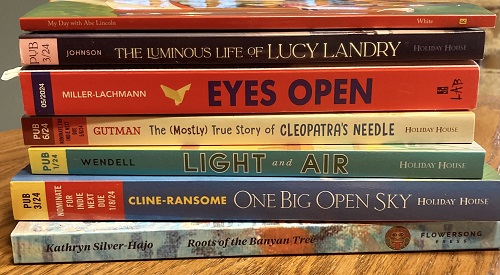Highlights from Research: The Ice Swan by J’nell Ciesielski
 BY LEE ANN ECKHARDT SMITH
BY LEE ANN ECKHARDT SMITH
J’nell Ciesielski’s latest historical romance features two main characters with an unusual and intriguing mix of backgrounds (Scottish and Russian), places them in a turbulent Paris during World War I, and explores what it takes to find a home. Through the research for this book, the author builds on specialties from her previous novels, and also explores interests she’s had for many years. She even uncovers historical medical information that helps shape one of her main characters.
In The Ice Swan (Thomas Nelson, 2021) Ciesielski takes on several new challenges as a writer, in terms of setting, character and research. For example, although she calls Scotland her “heart place,” declaring, “I’ll take any opportunity I can to write about Scotland,” in this book Scotland is not so much its own character as it was in her previous novel, Beauty Among Ruins (Thomas Nelson, 2021). Ciesielski explains: “Instead of focusing on the history and landscape, I gave more attention to the locals and their struggles after the war. What was it like to live in a remote village when the men were off fighting, and what things changed when they came home?” By finding answers to these questions, she worked to deepen her understanding of Scotland. Through the experiences of her main character Svetlana, Ciesielski describes the “peat fires, single room crofts built for an entire family, heather infused brew, and one reserved piece of china set aside for only the most honored of guests.” Beyond this, she also presents through Svetlana’s eyes how women of the time were forced to confront terrible difficulties of work, childcare, schooling, and medicine in a remote place that lacked support.
Russia, too, has long fascinated Ciesielski, in particular “the way cultural traditions, class divisions, and even the landscape played a part in the inevitable downfall of the Romanovs. Everything changed because of those events, and they haunted me,” Ciesielski says. She felt pushed “to explore what happened to all these noble and aristocratic families after the monarchy’s downfall when the Bolsheviks swept into power.”
Surprisingly, she realized that Russian and Scottish cultures are similar. “They are both shaped by wars,” Ciesielski explains, “and a determination to survive that breeds fierce hearts, and I find that utterly romantic and fascinating and it was fun to bring the two of them together.”
Casting a Russian Princess alongside a Scottish surgeon required detailed research into the White Russian émigré community in Paris during WWI. “Until recently,” she says, “I knew nothing about the White émigrés.” She studied extensively to understand the mindset and daily struggles of Russian nobles “forced into the common man’s workplace while nursing illusions of their Imperial heydays. Russian dukes drove taxi cabs and countesses ran boarding homes, as far from the palaces and glittering balls at the Winter Palace as they could possibly be.”

author J’nell Ciesielski
Learning about “Little Neva” in Paris was for Ciesielski the most interesting aspect of researching and writing this novel. She goes on to say that the most challenging aspect of research was that “I made the hero a surgeon. And not just any surgeon, but a cardiologist before there even was such a thing. At the time of the Great War open heart surgery was considered taboo and any doctor attempting to perform it was a lunatic and not to be trusted as a professional. Researching medical history and techniques was exhausting because I wanted to get every detail right as well as the mindset of the surgeon who would dare to attempt such a feat against the judgement of his peers.”
Fitting in, whether professionally or personally, is something both main characters struggle with. They are both looking for a home, whether physically, culturally, or in terms of learning to be true to themselves. The author explains that this theme developed differently for Princess Svetlana Dalsky and Dr. Edwynn MacCallan. “With Svetlana, finding a home was always part of the narrative,” she says. “How could it not be when she is chased from her country under threat of death? Raised in privilege and riches, she is thrown into circumstances she has never faced before: starvation, survival, humiliation. She must carve out an existence for herself and her family by using nothing more than her cleverness, yet once she finds supposed safety among her own people in Paris, nothing is as it seems. Fleeing the evil that sought to take her in Paris, she finds herself among more strangers in Scotland, a land as foreign to her as the moon. But it is here where she at last begins to find her place.”
The character Edwynn developed differently. “Wynn’s journey for belonging took me a bit by surprise,” Ciesielski says. “In the beginning his career as a surgeon was all that mattered, but as I researched more about cardiology I realized he was more of a black sheep than originally intended. He was causing a scandal in the medical field! Professionals of his mindset were ostracized by their peers which organically turned into his own search for a place to belong… as he observes Svetlana and her struggles he finally finds courage to seize his destiny as she has done.”
For The Ice Swan, historical romance novelist J’nell Ciesielski set herself several challenges as a researcher. She wanted to expand her understanding of her beloved Scotland. She felt pulled to explore aspects of Russian history that have long fascinated her. The course of developing one of her main characters led her to learn about the advent of cardiac surgery. “Like many historical writers,” she says, “research is my absolute favorite part of the process.”
About the contributor: Lee Ann Eckhardt Smith is the author of two non-fiction history books: the family saga, Strength Within: The Granger Chronicles (Baico, 2005), and Muskoka’s Main Street: 150 Years of Courage and Adventure Along the Muskoka Colonization Road (Muskoka Books, 2012). She is also a photographer and poet, and blogs here.






